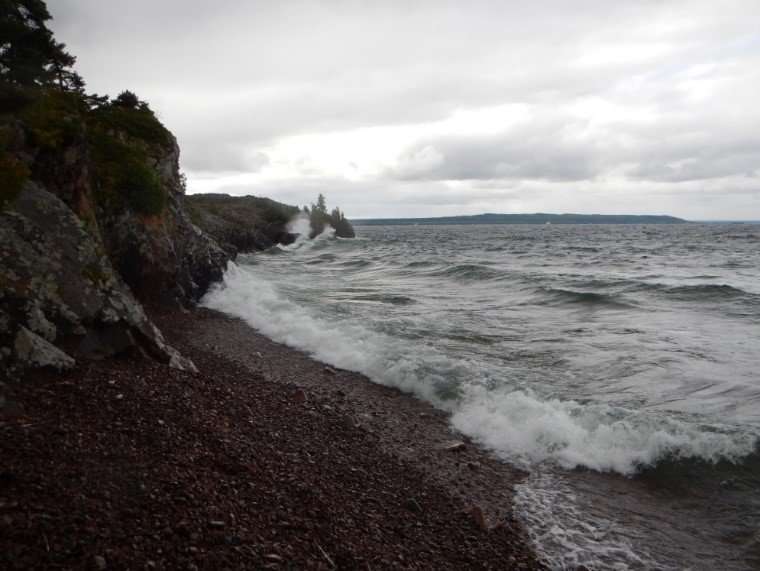Blinded by the light: Climate change, the sun, and Lake Superior

Lakes tend to emit carbon dioxide (CO2) to the atmosphere, making them important players in the planet's natural regulation of its climate. However, the direction of the flow of CO2 between lakes and the atmosphere can be influenced by humans or by natural factors such as rainfall or air temperature.
Lake Superior is the largest freshwater lake on the planet, and a number of detailed studies occurring in the late 1990s and early 2000s found that, like most lakes, it was a net source of CO2 to the atmosphere. However, earlier publications described Lake Superior as a sink of atmospheric CO2. Dr. Soren Brothers of the Ecology Center and Watershed Sciences Department at USU analyzed monitoring data of dissolved oxygen concentrations in the lake from the past 50 years. His analysis indicated that in most years the lake absorbs atmospheric CO2 from late May to early October, but then expels CO2 during the winter.
This reanalysis of CO2 fluxes resulted in the publication of Light may have triggered a period of net heterotrophy in Lake Superior in Limnology and Oceanography by Soren Brothers and his co-author Dr. Paul Sibley from the University of Guelph. Their synthesis indicated that a powerful climatic event such as the 1997/98 El Niño, coupled with the effects of climate change, could make Lake Superior a temporary summertime source of CO2 to the atmosphere. Their research demonstrates how the shifting dynamics of CO2 in lakes both contributes to and is affected by climate change. The El Niño of 1997/98 was associated with a strong decline in Lake Superior's winter ice cover, while climate change had gradually warmed its waters and reduced its cloud cover. A concurrent increase in water clarity resulted in greater light penetration, liberating a portion of the lake's dissolved organic carbon pool for release into the atmosphere as CO2. Since the early-to-mid 2000s, the lake appears to have returned to a net sink of atmospheric CO2.

As the water characteristics of Lake Superior are in many ways similar to that of some parts of the world's oceans, Brothers and Sibley suggest that their findings may be relevant to the large global pool of dissolved organic carbon in marine waters. Major implications for potential marine-atmospheric feedbacks exist with future climatic warming.
More information: Limnology and Oceanography (2018). DOI: 10.1002/Ino.10808
Provided by Utah State University


















